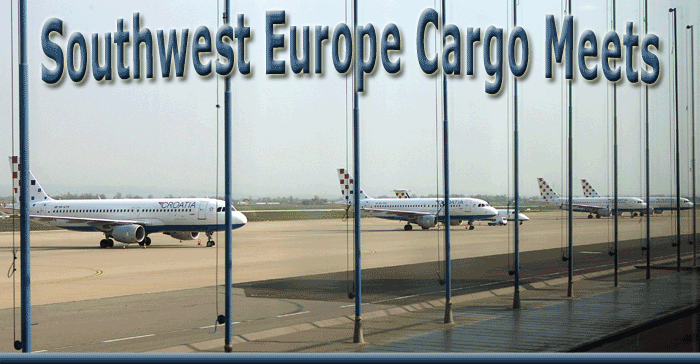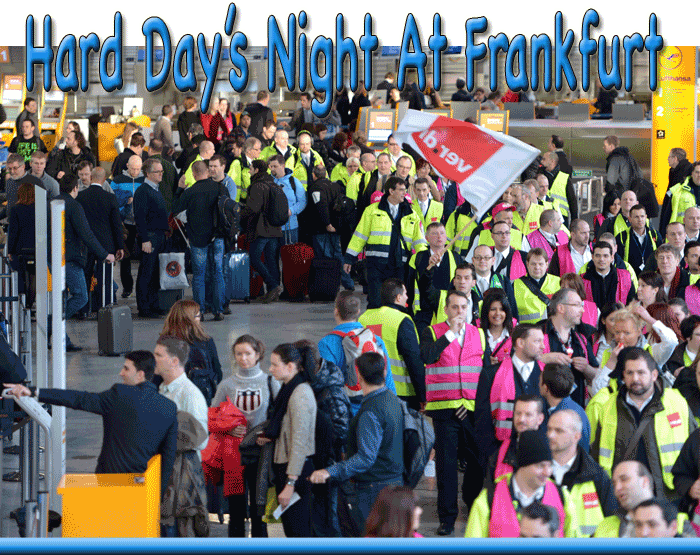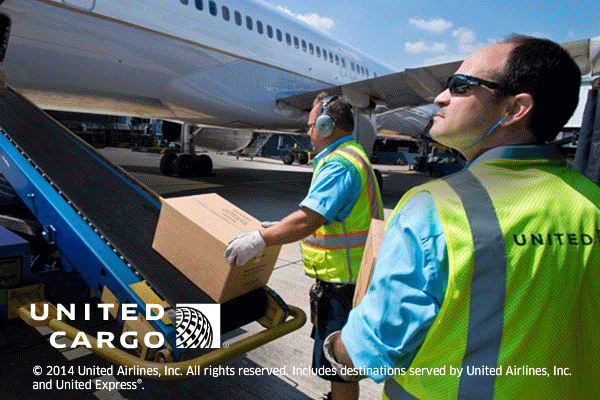 |

#INTHEAIREVERYWHERE |
|
|
Vol. 13 No. 19 THE AIR CARGO NEWS THOUGHT LEADER Monday February 24, 2014 |
 |
|
The
notice was brief:
I
met Bill when he served as Inspector General of the Dubai
Ports and Customs.
Bill
understood clearly the dilemma we were in and got us a special
dispensation in two days from the Ruler of Dubai allowing
us carry out the transaction, which we did very successfully.
My
report basically created a timeline showing sea freight
from Indian ports to Dubai (5 days) then the transfer and
airlifting the shipments via Dubai to final European destinations,
and then using the return empty leg of passenger and freighter
capacity from Dubai (2 days).
Bill
was able to process the change in the Customs ordinance
allowing us to transfer ocean freight to the airport without
payment of customs duty.
Our
first commercial sea/air shipment was Indian manufactured
garlic presses destined for London on Gulf Air.
The
very first container freight station (CFS) at Port Rashid
was established under a special dispensation organized by
Bill Duff, allowing us to move aircraft pallets and palletize
the goods at Port Rashid.
Once,
after a long day at work, I commented on the overwhelmingly
large numbers of merchants, traders, or logistics service
providers he must be accommodating in a day, and his response
surprised me:
Bill
Duff came to grips with the challenges of sea-air combined
transport and focused instead on what it would mean to Dubai.
Bill’s
passing is indeed a great loss to the industry. |
 |
 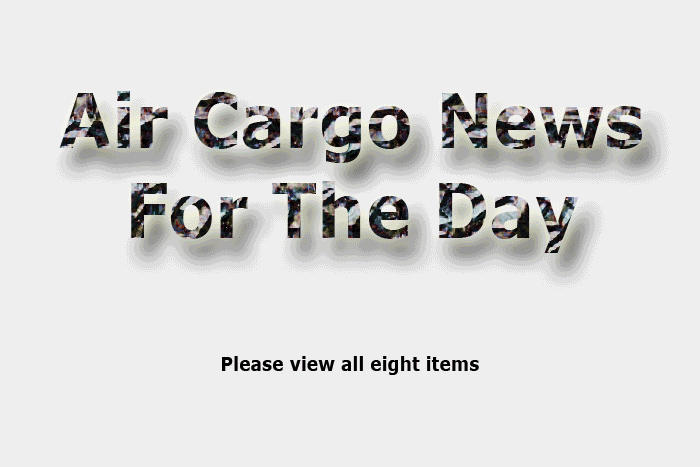 |
|
Emirates
SkyCargo Freight Switcheroo |
|
A veritable
treasure trove of reports released in the second half
of January unveiled a new look at the cargo and logistics
industry, which is on the brink of positivity after two
years of heavy slogging against structural and economic
headwinds.
|
|||||||||||||||||||||||||||||||||||
Stifel Air Freight Confidence Index: Present Situation |
Air Freight Confidence Index |
Present Situation |
Expected Situation |
||
January |
Change from December |
January |
Change from December |
|
Europe To Asia |
50.1 |
-4.7 |
60.7 |
-2.1 |
Asia To Europe |
61.6 |
1.0 |
65.3 |
2.5 |
Europe To U.S. |
47.8 |
-2.1 |
56.5 |
2.7 |
U.S. To Europe |
45.6 |
1.5 |
61.5 |
2.0 |
All Lanes |
51.7 |
-1.1 |
61.2 |
1.3 |
Perhaps of
even more interest to our readers was a new survey outlining
in detail which air cargo lanes grew and contracted most
during 2013. The 2014 Agility Emerging Markets Logistics
Index, developed with Transport Intelligence, also shed
a fascinating light on air cargo trends via its survey
of more than 800 industry executives.
This revealed that logistics
and trade professionals are far more optimistic about
the global economy in 2014 than they were a year ago,
with 72 percent forecasting “modest growth”
in global economic output and trade volumes in the next
12 months, compared to less than half a year ago. More
than half of respondents expect “modest growth”
in the U.S. and EU economies, while 58 percent expect
to see emerging markets countries in Asia producing the
highest growth rates in 2014.
Turning specifically to
air freight, China dominated trade lanes in 2013. But
although it was the major origin of cargo globally, its
air freight volume to the United States fell 7.5 percent
in 2013 compared to a year earlier. “Among the top
10 largest air lanes, the biggest volume gains were Colombia-U.S.,
Chile-U.S., and Bangladesh-EU,” said the report,
with the latter lane growing 96 percent year-on-year in
2013.
However, the fastest growing
lanes in terms of CAGR over 2005-2013 originated in Ethiopia,
not least because of heavy investment by Ethiopian Airlines
in its network. Over the period this saw growth of 27
percent on the Ethiopia-U.S. lane and 30 percent from
the African country to the UE. “Ethiopia has benefited
from the African Growth and opportunity Act (AGOA), which
was enacted in 2001 as a U.S. trade initiative to encourage
trade with 39 Sub-Saharan African nations,” said
the report, which also predicted that growth ex-Ethiopia
might taper off as government pricing controls on coffee
and other agricultural exports came into force.
China was also the market
leader as a destination for air cargo from the U.S. and
EU last year. Among the top 10 busiest lanes from U.S./EU
destinations to emerging markets, EU air cargo bound for
India and South Africa declined sharply, according to
the report. “In air cargo, the emerging markets
with the fastest growing exports to the U.S./EU were Ethiopia,
Cambodia, Ecuador, Chile, Bangladesh, and Kenya, although
the increases come off of relatively low margins,”
said the report. “Ethiopia, Ukraine, Oman, Bahrain,
Libya, Qatar, and Vietnam were destinations for inbound
air cargo on the fastest-growing lanes between the U.S./EU
and emerging markets.”
The outlook for 2014 looks
set to see further growth in trade between OECD countries
and emerging economies, boosting logistics demand across
modes.
“Not only does the
majority of the world’s population reside in emerging
markets, but these markets offer expanding middle classes
and a younger average age compared to the more developed
markets of the U.S. and Europe,” said John Manners-Bell,
Chief Executive of Transport Intelligence. “The
need to meet the rising needs of these markets is a great
opportunity for logistics providers, but it will also
prove a bumpy process as economic, political, and other
risks will need to be navigated carefully.”
SkyKing
 |
Stop
the world—we want to get off! |
Get
On Board Air Cargo News FlyingTypers |
There was bad news for travellers at Frankfurt International Airport Saturday as thousands of passengers were delayed because of a lightning strike by private security company members of Union Verdi, petitioning for a pay raise. |
If
You Missed Any Of The Previous 3 Issues Of FlyingTypers
|
|||||
|
|||||
FT021414 |
FT021814Bulldog |
||||
|---|---|---|---|---|---|
Publisher-Geoffrey
Arend • Managing Editor-Flossie Arend • Associate Publisher/European
Bureau Chief-Ted Braun Film Editor-Ralph Arend • Special Assignments-Sabiha Arend, Emily Arend • Advertising Sales-Judy Miller |
|



 The
news about the death of Bill Duff on February 14 may be
considered another chapter in the passing parade by many.
The
news about the death of Bill Duff on February 14 may be
considered another chapter in the passing parade by many.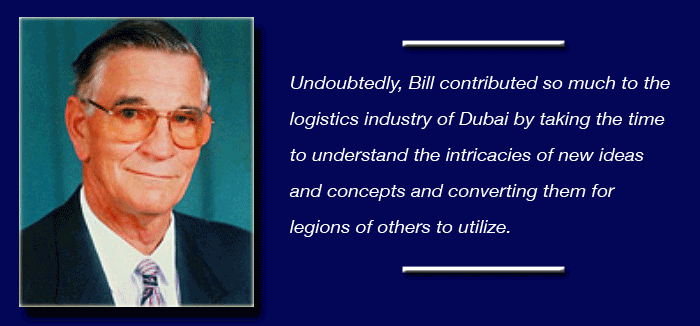
 “Mr. Duff was the role
model for my Dad.”
“Mr. Duff was the role
model for my Dad.” 
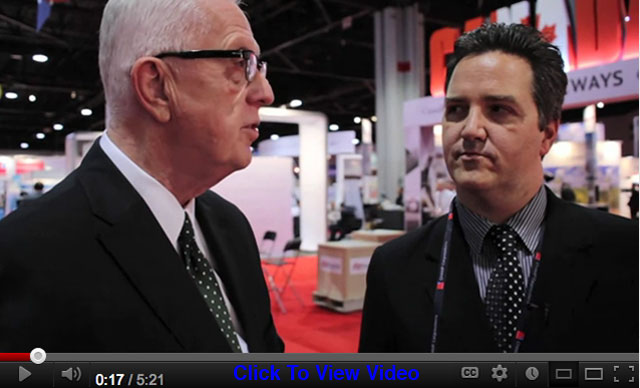
 Emirates
SkyCargo freighters will be based at Al Maktoum International
Airport beginning May 1 just as belly cargo operations will
continue to operate from Dubai International Airport.
Emirates
SkyCargo freighters will be based at Al Maktoum International
Airport beginning May 1 just as belly cargo operations will
continue to operate from Dubai International Airport.
